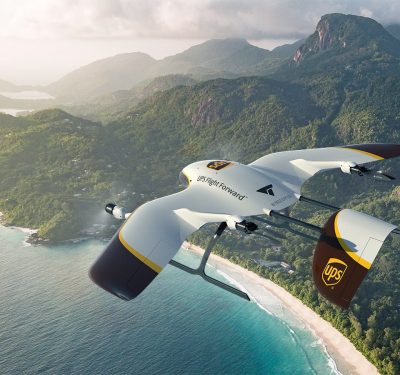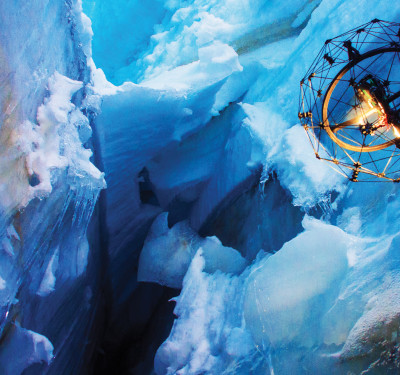
The FAA draft drone remote identification (RID) rules are finally out. They’re well thought out and implementable, except for a few major exceptions I’ll discuss in the Wait . . .What??? section of this article. The draft rules are a 319-page monster that certainly embrace the Air Force writing style of tell ‘em what you’re going to tell ‘em, tell ‘em, and then tell ‘em what you just told ‘em. And then tell ‘em again. However, the executive summary does a great job of covering the basics and the proposed rule itself is only 41 double spaced pages (it starts on page 278 of the PDF and you can find it here).
The Good Stuff
Everyone MUST have RID, or else: ALL UAS over 0.55 pounds must have RID (Remote Identification of Unmanned Aircraft), with very limited exceptions (amateur aircraft and models built without it well before this rule, which can only be operated in a federally recognized implementation area or FRIA). This was a HUGE fight during the aviation rulemaking committee, and the FAA sided with the commercial drone community over the hobbyists on this one. What’s more, the FAA is re-doing drone registration to require everyone—hobbyists included—to register. Once registered, remote pilots must provide a drone serial number that manufacturers must hard-wire into the drone.
Manufacturers MUST bake in RID: Manufacturers must make RID integral to the drone’s flight system. If the RID fails during the drone’s start-up check, the unmanned aerial vehicle (UAV) won’t take off. Manufacturers must also make RID “tamper resistant” and provide cybersecurity to stop unsophisticated operators from changing their RID settings. Big battle here also—manufacturers had wanted to make RID compliance solely the responsibility of the remote pilot and not themselves. That said, this mandate might change the drone market profoundly. DJI definitely has the cash to comply and provide the paperwork saying they comply because they make thousands of drones. Compliance paperwork alone could cost tens of thousands of dollars for each type of drone manufactured. Can Hollywood camera drone companies afford that when making a dozen or so drones for a particular movie camera?
A good compromise is to certify RID modules separately from the unmanned aircraft. That way, a handful of secure RID module manufacturers can go through the pain of compliance and UAV would be compliant with the RID module on board.
Standard RID makes sense: Standard RID is for any drone that can fly more than 400 feet from its ground station. Standard RID drones must transmit their UAS ID (serial number or session number), UAV location/altitude, ground station location/altitude, time and emergency status via “the internet” under normal operations. If the internet isn’t available at launch or is lost during flight, the UAV must broadcast this information over frequencies that are compatible with personal communications devices (Wi-Fi, Bluetooth, etc.).
Although I think it is better for the UAV to broadcast its position as the primary mode via the internet, the FAA’s proposal for standard RID is workable. See the “Wait . . .What?” section for the other proposed RID mode.
Hobbyists can still fly: Hobbyists can still fly without RID, but only at FAA-approved FRIAs FAA– Recognized Identification Area). Community Based Organizations (like the Academy of Model Aeronautics) have a year to request FRIAs from the FAA. That’s a reasonable compromise that relies on responsible organizations like the AMA to partner with hobbyists for education and keeps purposely unidentified drones confined to predictable places.
I just hope the FAA has a streamlined approval process. The AMA alone has thousands of model aircraft fields. Keep in mind, this is a “one time only” application process and the FAA has said they won’t take more applications after the year is up. That seems a bit harsh for the future of recreational drones. I can never ever open a recreational drone field after this random one year period?
It might take a while: The FAA is allowing a three-year transition period from the time the rule goes final before most of the rules are mandatory (manufacturers will have two years). Plenty of time to sort things out. However, they’re also looking to incentivize early adoption and believe the vast majority of currently registered remote pilots could have RID with a single patch from their manufacturers. I’m not sure how a software patch complies with anti-tamper provisions, but compliant RID retrofit modules exist today and can speed up implementation.
It’s outsourced: The FAA is clearly washing its hands of drone RID and turning RID over to its Unmanned Aircraft System Service Suppliers (USS) to avoid paying some massive start-up and infrastructure costs. Remote pilots will be REQUIRED to have a RID USS subscription to fly. Interestingly, the FAA plans to control these RID USS’s via the contract they sign with the FAA and not via rules or policy.
I agree with this in principle because changing rules can take years and things may change quickly as we learn what works. However, that’s a lot of responsibility to place on a contracting officer and the FAA will have to put provisions in the contract that could have a massive effect on the American public, without the important opportunity for public review that comes with the rules process. For example, what if the FAA doesn’t force all the RID USS’s to cooperate with each other—or with law enforcement (as is currently envisioned)? The Verizon RID USS might not share subscriber tracks with the AT&T RID USS. Remote pilots might have to deal with several RID USS in congested airspace. Will law enforcement need subscriptions to every RID USS to make sure it can track all drones in their city? What about the feds? The devil is in the details.
The Wait . . . What Parts?
Everyone MUST have “standard” RID except most of the current small drone market: The FAA inexplicably included a “limited” RID option for small drones that are not capable of flying more than 400 feet from their remote pilot. Limited RID drones must have internet connectivity to fly, but must only transmit their UAS ID, ground station location/altitude, time and emergency status. No kidding; these drones won’t have to tell anyone where their air vehicle is flying. What’s more, the FAA will prohibit them from broadcasting RID, even if they lose internet connectivity.
How is it safe to just transmit the location of the ground station and not the UAV itself? What happens when these drones go lost link? The ground station won’t know where they are any more and the UAV won’t be broadcasting its position. The only thing the ground station can do is transmit that it lost its air vehicle . . . somewhere. How is a New York cop going to know which remote pilot is behaving badly out of the dozen of UAVs flying over Central Park? She can see that one UAV is being flown dangerously, but which of the dozen pilots located on her RID app is flying the errant drone? Mandatory internet connectivity in order to fly drones will work in New York City, but what about rural users? Did the FAA just cut off a good chunk of Wyoming from the joys of drone ownership?
Then there’s the “not capable of flying 400 feet from the ground station thing.” Although the FAA “envisions that this requirement can be met through a range of solutions, such as geofencing or command and control link power limitations,” I’m not convinced. Geofencing didn’t work in Syria or Iraq when allegedly geofenced drones rained down on our troops. Heck, I’m a political science major and even I could figure out how to boost the power/gain of my drone C2 link to fly it beyond 400 ft. I guess a string from the drone to the remote pilot might work. But wait . . . scissors. Scratch that one too!
The FAA might hand control of RID to the Communists: The FAA might allow drone manufacturers to become RID USS’s. That would be great if the market were balanced or even if allied nations made most of our registered drones, but Figure one on page 189 of the proposed RID rule shows that drones manufactured by “covered foreign entities” (companies from communist countries, Iran, etc.) are 81.5% of the drones registered in the US. BTW—the Sherman Antitrust Act defines a monopoly as owning just 75% of the market. Why—on earth—would we want to let them extend that monopoly to RID? Why would we want to invite them even further into our unmanned traffic management systems that will be integrated in one way or another with our manned air traffic management systems? Prohibiting all manufacturers from becoming RID USS’s will impact the market—Amazon, Google and GE all probably want to make small drones in addition to running an RID USS. Just ban covered foreign entities from becoming an RID USS.
RID won’t talk to manned aircraft: The proposed rules prohibit small UAS from broadcasting on ADS-B in any way, shape or form. The FAA Air Traffic Organization (ATO) has had a phobia of small drones on ADS-B since day one of the aviation rulemaking committee. Armed with a seven-year-old MITRE research paper on drones using ADS-B, ATO insisted that small drones with ADS-B will collapse the system and they clearly won the argument in these draft rules. What they failed to address is how manned aircraft will receive small drone positioning data to avoid collisions. The rules say manned aircraft “could carry the necessary equipment to display the location of UAS operating nearby” but is silent on what that vital safety equipment would be.
This is yet another key component of the system of systems that the FAA has outsourced. How will crop dusters and tour helicopters get small drone RID? LTE? Not very reliable in moving aircraft. Wi-Fi or Bluetooth? The signals aren’t strong enough and are way too saturated to hear in a moving aircraft. Satellite communications? Expensive and bulky. The Traffic Information Service -Broadcast (TIS-B)? That would work, but didn’t FAA AT say small drone RID would collapse the system? Until the FAA figures this out, the responsibility for avoiding collisions between drones and manned aircraft lies solely with the remote pilot. That will increase risk in beyond visual line of sight drone operations.
Broadcast might not work: My industry friends are saying it is harder than it sounds to get RID via Bluetooth or Wi-Fi because the spectrum is crowded and these signals were never designed to operate at long distances. Can you imagine how many Wi-Fi or Bluetooth signals would show up on the phone of our New York cop if she had to track a drone via broadcast? True, any solution other than Wi-Fi or Bluetooth would require a dongle for cell phones. ADS-B dongles cost about $20 on Amazon and I’ll bet a UAS RID beacon dongle would cost less. This is a small price to pay for reliable RID that manned aircraft and law enforcement can reliably receive. ASSURE has received about $25 million in research funding. I say put some of that on researching RID broadcast reliability before we go much further.
To sum up
All in all, the draft rule is pretty good. The FAA can fix it by removing the limited RID provision, limiting RID USS owners to US companies only, allowing compliant secure RID modules and by applying additional research to these rules before they go final. The hard part was making this applicable to everyone and thinking through how to pay for this all. I’m very hopeful public comments will convince the FAA to make changes and give the drone market the key technology it needs to move forward.






